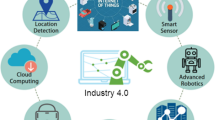Abstract
Current pricing and charging methods for the Internet are not based on actual usage of this service, which leads to unfairness and more important, it does not deliver the right signals through financial incentives to network providers to upgrade critical links of their networks. The development of new multimedia applications and the convergence to an integrated services network will foster the tremendous growth of the Internet even more. With the Next Generation Internet not only technical services like bandwidth reservation will be introduced, but also new applications will emerge within the Internet.
Charging the Internet in a fashion that provides feedback to users and providers has been proposed since the early '90s, however, only a few implementations and real-world examples are known today. This is due to subsidizing the Internet in its early stages and due to a technical development that did not care much about charging. With the recent redesign of the Internet protocol suite and discussions on multiple service classes in the Internet, architectures for charging and accounting have to be revisited, too.
Economic models for the Internet cannot be tested fully and validated in non-real-world environments, because of the unknown user behavior. With this uncertainty over what models and pricing schemes to choose, it is evident that a specific charging and accounting platform will never be accepted by the community. In this paper a novel and flexible architecture for charging and accounting is proposed that provides a wide range of mechanisms and lets researchers experiment in an environment as close as possible to the targeted system. As a first step, four different pricing schemes are described, qualitatively assessed on the proposed platform, and a prototypical implementation performed. One of the economic models that have been implemented on Arrow is based on different service classes including reservation and recalculates prices dynamically depending on the traffic situation.
Similar content being viewed by others
References
R. Braden, D.D. Clark and S. Shenker, Integrated services in the Internet architecture: An overview, Request for Comments, RFC 1633, Internet Engineering Task Force (June 1994).
R. Braden and D. Hoffman, RAPI - An RSVP application programming interface, Internet Draft (June 1997).
S. Bradner and A. Mankin, The recommendation for the IP next generation protocol, Request for Comments, RFC 1752, Internet Engineering Task Force (January 1995).
N. Brownlee, C. Mills and G. Ruth, Traffic flow measurement: Architecture, Request for Comments, RFC 2063, Internet Engineering Task Force (January 1997).
M. Carter and G. Guthrie, Pricing Internet: The New Zealand experience, Department of Economics, University of Canterbury, Christchurch, New Zealand (December 1994).
D. Chaum, Achieving electronic privacy, Sci. Amer. (August 1992) 96–100.
D.D. Clark, A model for cost allocation and pricing in the Internet, in: MIT Workshop on Internet Economics (March 1995).
R. Cocchi, D. Estrin, S. Shenker and L. Zhang, A study of priority pricing in multiple service class networks, ACM Comput. Commun. Rev. 21(4) (1991) 123–130.
R. Cocchi, S. Shenker, D. Estrin and L. Zhang, Pricing in computer networks: Motivation, formulation and example, IEEE/ACM Trans. Network. 1(6) (1993) 614–627.
D. Decasper, M. Waldvogel, Z. Dittia, H. Adiseshu, G. Parulkar and B. Plattner, Crossbow - A toolkit for integrated services over cell-switched IPv6, in: Proc. of the IEEE ATM '97 Workshop, Lisboa, Portugal (June 1997).
S. Deering and R. Hinden, Internet protocol, version 6 (IPv6) specification, Request for Comments, RFC 1883, Internet Engineering Task Force (December 1996).
R.J. Edell, N. McKeown and P.P. Varaiya, Billing users and pricing for TCP, IEEE J. Selected Areas Commun. 13(7) (1995) 1162–1175.
H. Eriksson, MBONE: The multicast backbone, Commun. ACM 37(8) (1994) 54–60.
D. Estrin and L. Zhang, Design considerations for usage accounting and feedback in Internetworks, ACM Comput. Commun. Rev. 20(5) (1990) 56–66.
J.L. Hennessy, Computer Architecture, A Quantitative Approach (Morgan Kaufmann, San Mateo, CA, 1990).
B-ISDN ATM layer cell transfer performance, International Telecommunication Union, Recommendation I.356 (November 1993).
J.K. MacKie-Mason and H.R. Varian, Pricing the Internet, Technical Report, University of Michigan, Michigan (February 1994).
M. Müller, Analyse und Entwurf von Tarifierungsmodellen für Kommunikationsdienste, Term Work, Institut für Technische Informatik und Kommunikationsnetze, ETH Zürich, Switzerland (June 1997).
C. Parris, S. Keshav and D. Ferrari, A framework for the study of pricing in integrated networks, Technical Report TR-92-016, International Computer Science Institute, Berkeley, CA (March 1992).
J. Postel, Internet protocol, DARPA Internet program protocol specification, Request for Comments, RFC 791, Internet Engineering Task Force (September 1981).
Raw data: More phones, more money, Wired Magazine No. 5.06 (June 1997) 80.
S. Shenker, Service models and pricing policies for an integrated services Internet, in: MIT Workshop on Internet Economics (March 1995).
S. Shenker, D. Clark, D. Estrin and S. Herzog, Pricing in computer networks: Reshaping the research agenda, ACM Comput. Commun. Rev. 26(2) (1996) 19–43.
D. Tennenhouse, Personal communication (November 21, 1996).
The White House, Office of the Press Secretary, Background on Clinton-Gore administrations Next-Generation Internet initiative, Press Release (October 1996).
J. Wroclawski, The use of RSVP with IETF integrated services, Internet Draft (September 1996).
L. Zhang, S. Deering, D. Estrin, S. Shenker and D. Zappala, RSVP: A new resource reservation protocol, IEEE Networks Magazine 31(9) (1993) 8–18.
Author information
Authors and Affiliations
Rights and permissions
About this article
Cite this article
Fankhauser, G., Stiller, B. & Plattner, B. Arrow: A flexible architecture for an accounting and charging infrastructure in the Next Generation Internet. NETNOMICS: Economic Research and Electronic Networking 1, 201–223 (1999). https://doi.org/10.1023/A:1019162124120
Issue Date:
DOI: https://doi.org/10.1023/A:1019162124120




